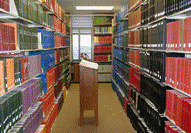Libraries at University of Nebraska-Lincoln
Date of this Version
3-2009
Abstract
The art and art history collection supports the teaching, research and service activities of the entire university community. Its primary audience is the faculty, staff, and students of the Department of Art and Art History in the Hixson-Lied College of Fine and Performing Arts. Its primary focus is support for the undergraduate and graduate curricula for art and art history. Specific and transient research needs of art and art history faculty and graduate students are supplemented through Interlibrary Loan. Materials are not purchased for the general public though they may benefit from the collection. While the collection focuses on works classified in Art N and Photography TR, curriculum and research support is also provided by works classified as history, anthropology, archeology, psychology, aesthetics, classics, architecture, engineering, religious studies, and other areas.
The department offers two programs of study: studio art and art history. The two have quite different functions and research needs. The studio art program trains those who are creating art; the art history program trains those who are studying art. The department has 20 faculty tenured or tenure track faculty. Five of the 20 teach art history. Adjunct faculty and visiting artists and scholars also play an important role. In Fall of 2008, the department reported 263 undergraduate majors; 37 studying for a BA in studio art; 203 studying for a BFA in studio art, and 23 studying for a BA in Art History and Criticism. The MFA in studio art had 29 students.
Department coursework falls into three areas: Art Theory and Practice, Art History and Criticism, and Studio Art. Art History students explore the history of the visual arts and the theoretical and critical literature associated with the cultures producing a given art style. Studio art students study ceramics, graphic design, painting/drawing, photography, printmaking, sculpture or textiles. They rely less heavily on library or other information sources than art history students. Studio students also take two semesters of coursework in the Visual Literacy Program, an interdisciplinary, collaborative foundation program for first year students in Art, Architecture, Interior Design, Textiles, and Journalism. It is designated Program of Excellence. Library collections that specifically support the VLP have a separate collection development policy.
In the department’s words, “Courses are offered in areas ranging from ancient art to modern art in various cultures, and from the introductory through graduate levels. In these courses, students not only study the art, artists and stylistic aspects of these periods, but also explore the historical and social issues that influence art production and its presentation. Exposure to artists in other periods can help students to clarify their sense of what it means to be an artist today; exposure to art of the past nourishes the daily work done in the studio. Artists must be able to talk and write about their own work, and to think about other artists' work in relation to their own. Many students find a great overlap between conceptualization and critical thinking about the art of their own time, and the critical choices involved in their own art-making.”


Comments
University Libraries, University of Nebraska-Lincoln